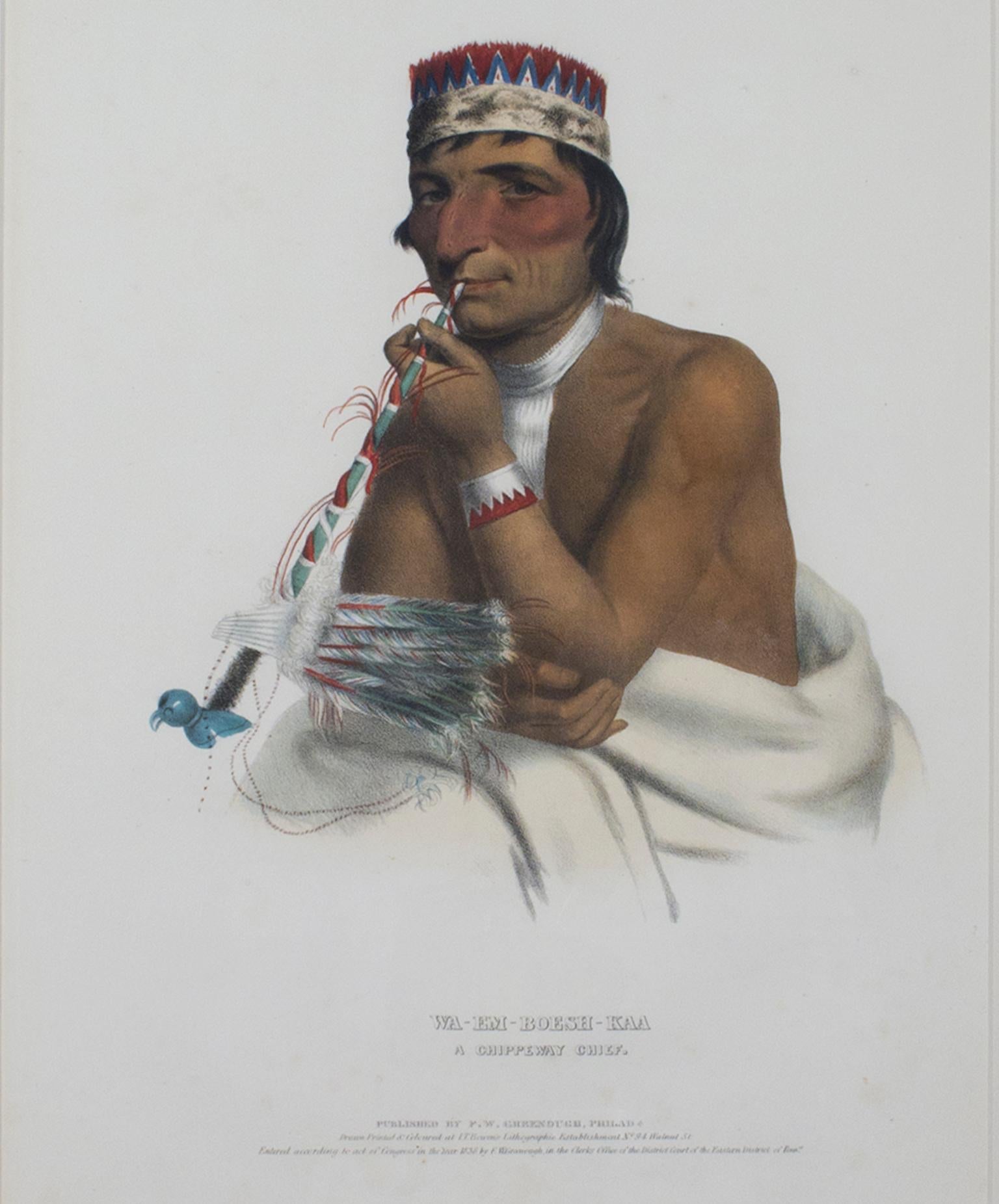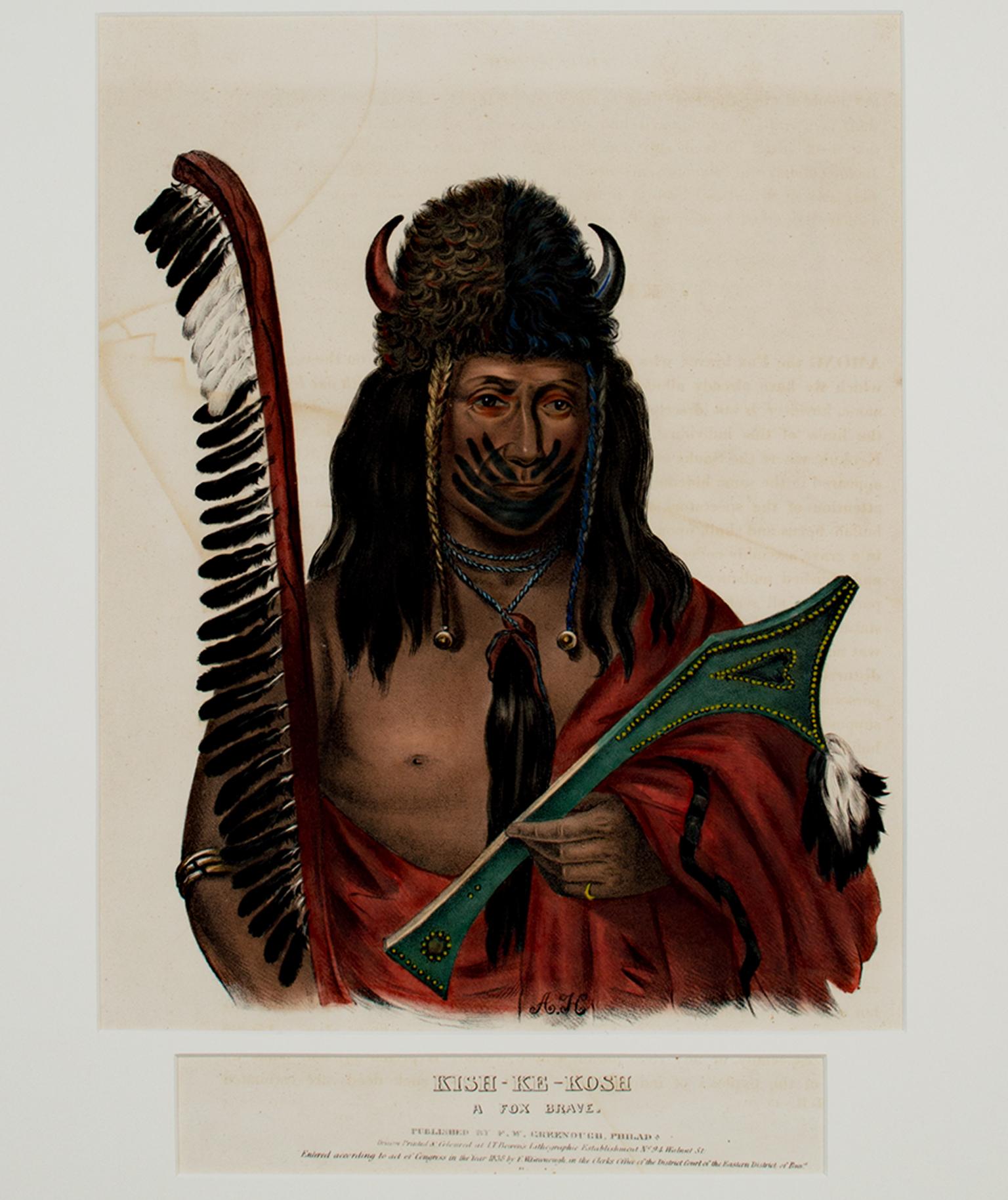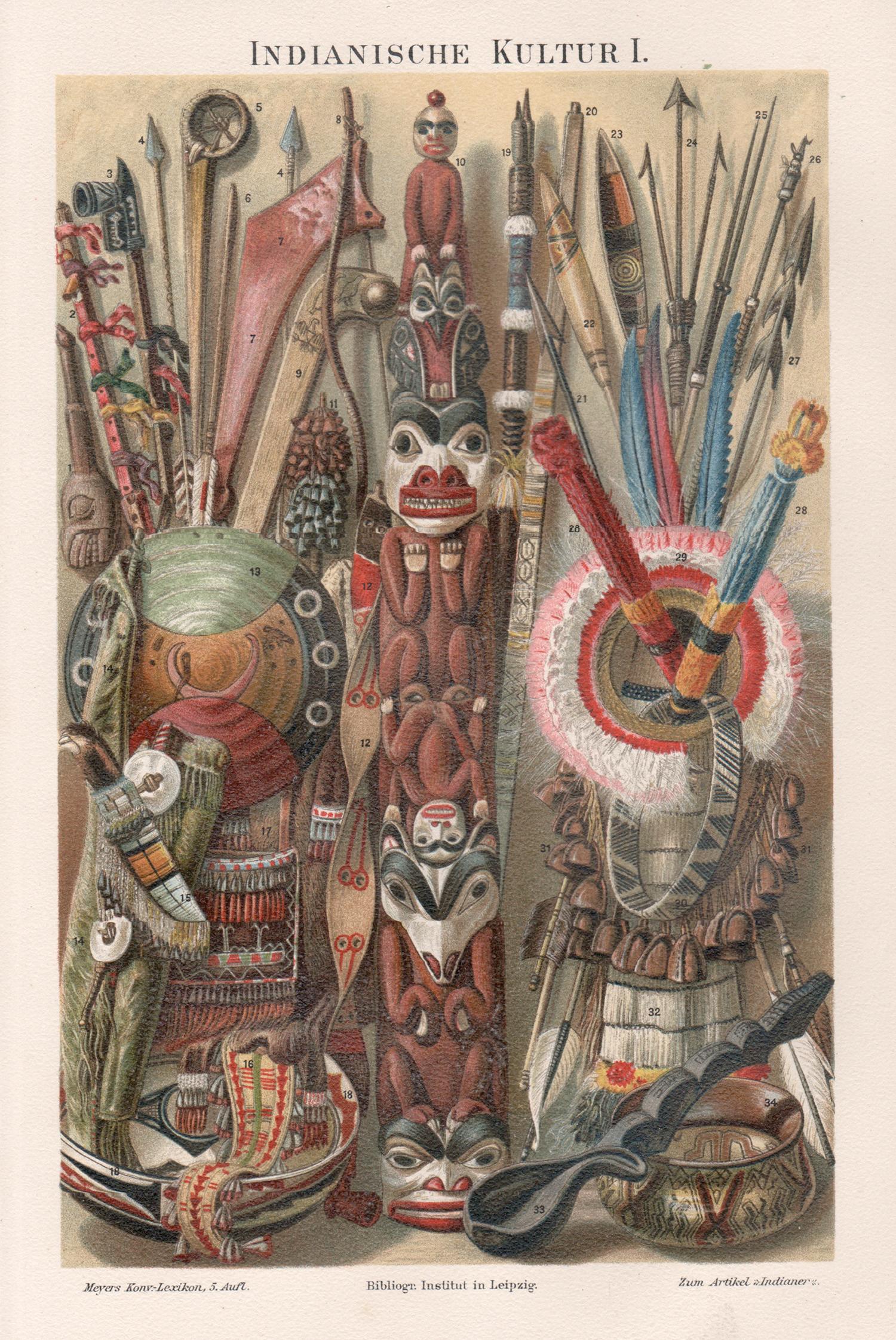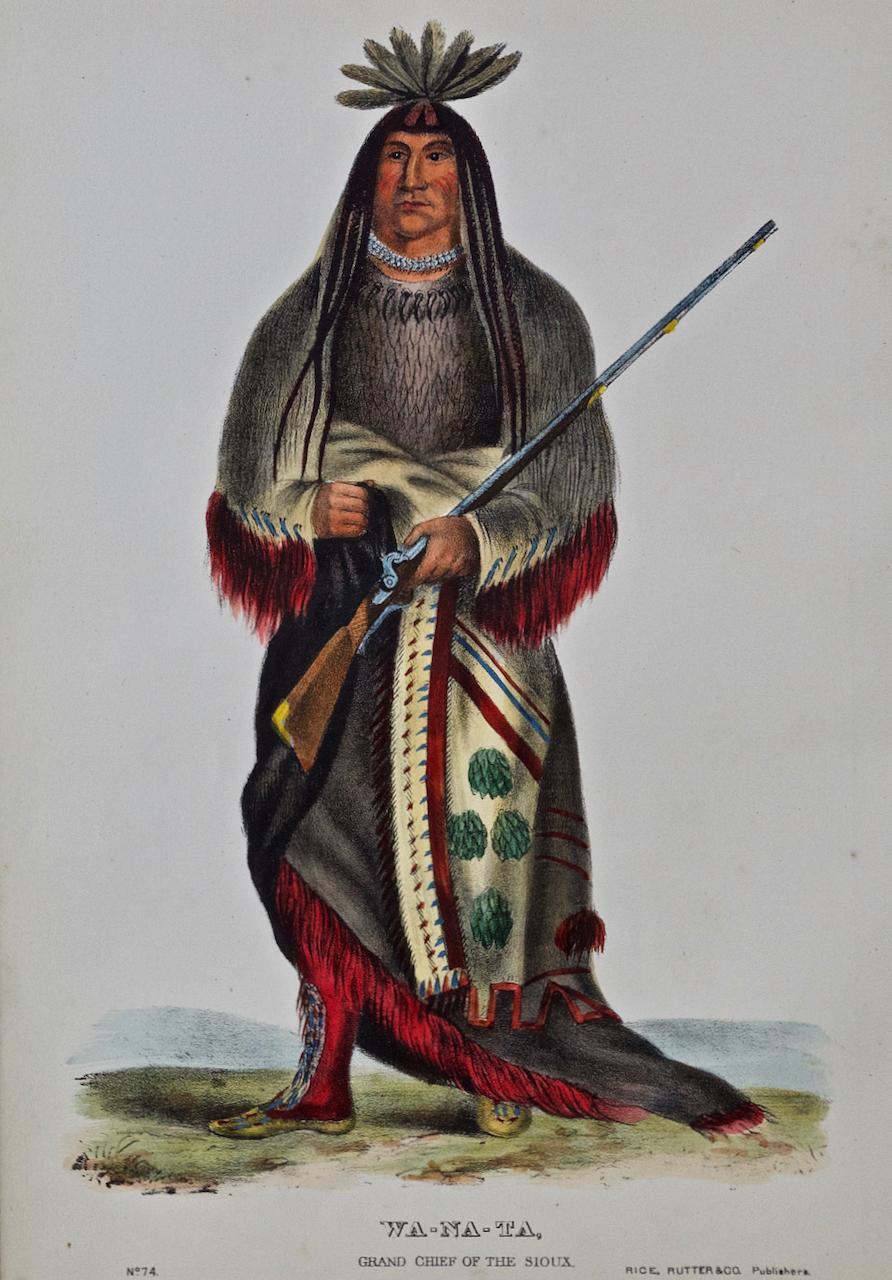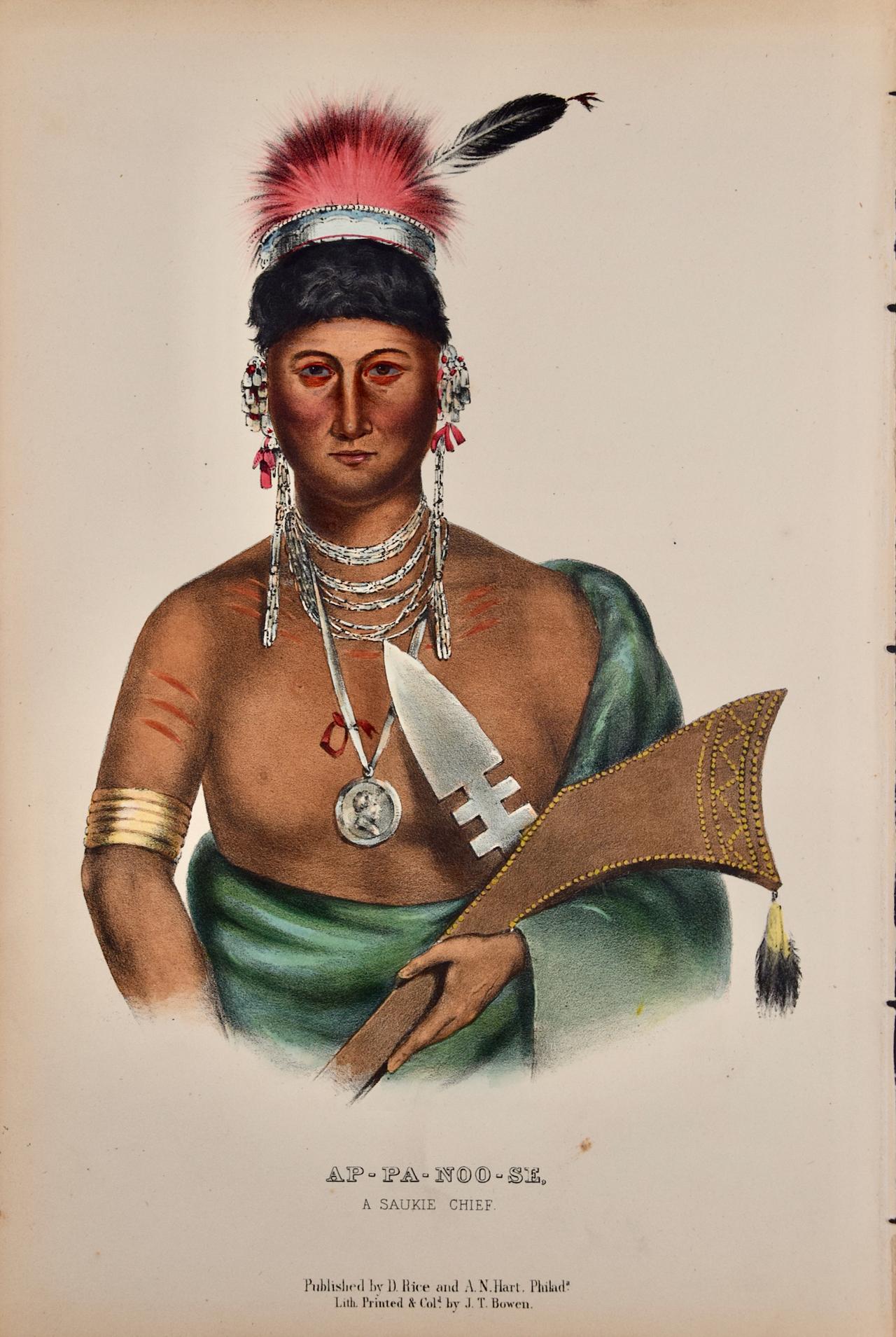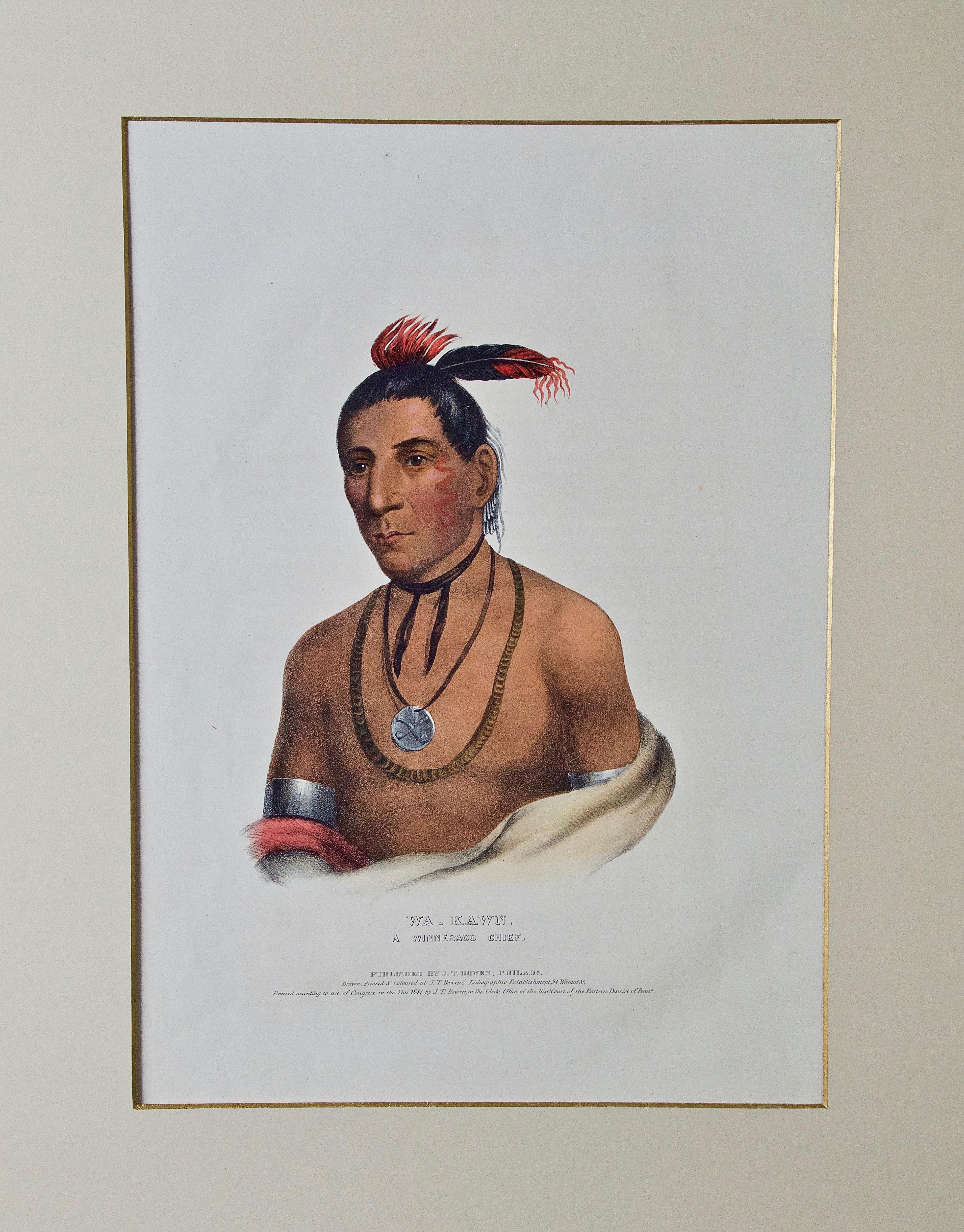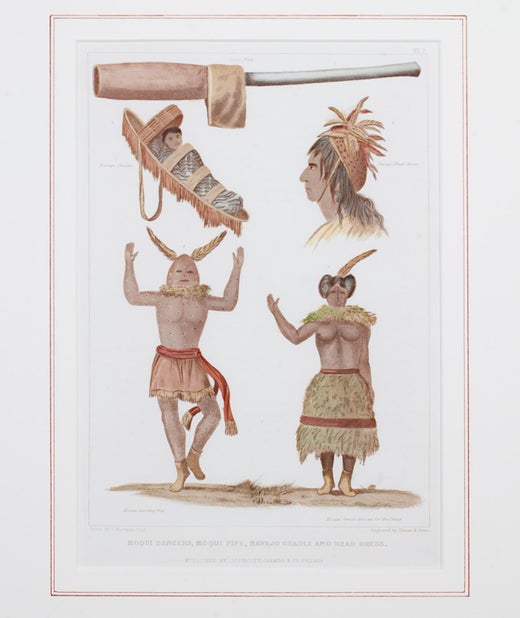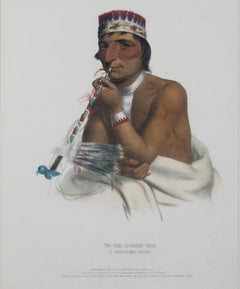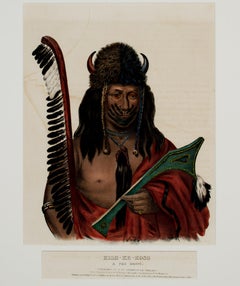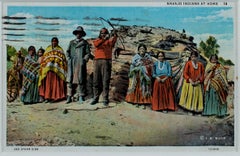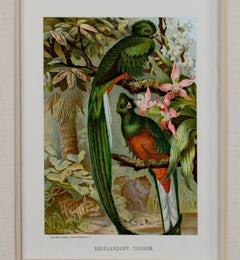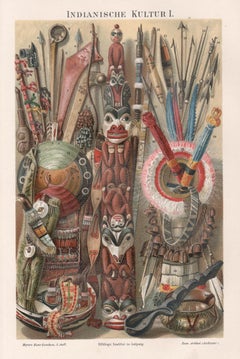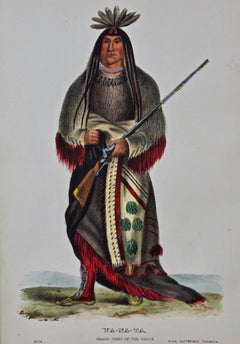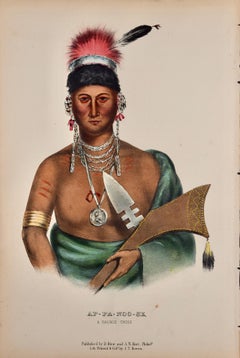Seth Eastman19th century color engraving indigenous figures feathers text full body face1847
1847
About the Item
- Creator:Seth Eastman (1808 - 1875, American)
- Creation Year:1847
- Dimensions:Height: 19.875 in (50.49 cm)Width: 15.5 in (39.37 cm)
- Medium:
- Period:
- Condition:
- Gallery Location:Milwaukee, WI
- Reference Number:Seller: 10913g1stDibs: LU60533142983
Seth Eastman
Seth Eastman is known primarily for his depictions of daily life among the Dakota and Ojibwe tribes in Minnesota. He was born to Robert and Sarah Lee Eastman on January 24, 1808, in Brunswick, Maine. Eastman attended the United States Military Academy at West Point, New York, where he received training in sketching and topography. While at West Point, he began to paint scenes featuring the daily life of local Native American tribes. In 1830, Eastman was assigned to topography duty on the frontier and spent a short time at Fort Snelling before returning to West Point to teach. While at Fort Snelling, Eastman married Wakaninajinwin, the fifteen-year-old daughter of Cloud Man, a Dakota chief. Eastman left in 1832 for another military assignment soon after the birth of their baby girl, Winona and declared his marriage ended when he left. Winona was also known as Mary Nancy Eastman and was the mother of Charles Alexander Eastman, author of Indian Boyhood. From 1833–40, Eastman taught drawing at West Point. In 1835 he married his second wife, Mary Henderson, the daughter of a West Point surgeon. In 1841, he returned to Fort Snelling as a military commander and remained there with Mary and their five children for the next seven years. It was during this time that Eastman began visually recording the everyday way of life of the Dakota and Ojibwe people. His wife Mary also became involved in preserving Indian culture by writing books on local tales and legends, which he would illustrate for her. The most important of these books was entitled Dahcotah: Or, Life and Legends of the Sioux Around Fort Snelling. In 1847, Henry R. Schoolcraft, a former Indian agent, was chosen to conduct a study of the American Indian people. Eastman illustrated the six-volume set, published between 1851 and 1857 as Historical and Statistical Information Respecting the History, Condition, and Prospects of the Indian Tribes of the United States. The U.S. House of Representatives Committee on Military Affairs also commissioned Eastman to paint images of 17 important military forts, which he completed between 1870–75. These paintings are now housed in the United States Capitol in Washington, D.C. Eastman's works are significant for Minnesota history because art historians believe that Eastman based many of his paintings and sketches on his observations in the Sioux villages of Kaposia and Little Crow, as well as in Scott, Wabasha and Winona counties. Eastman died of a stroke while painting at his home in Washington, D.C., on August 31, 1875.
- ShippingRetrieving quote...Shipping from: Milwaukee, WI
- Return Policy
More From This Seller
View All1830s Academic Portrait Prints
Lithograph
1830s Academic Portrait Prints
Lithograph
1930s Other Art Style Figurative Prints
Postcard, Lithograph
Late 19th Century American Realist Animal Prints
Lithograph
1990s Post-Modern Figurative Prints
Lithograph, Ink
Mid-19th Century Romantic Figurative Prints
Watercolor, Lithograph
You May Also Like
Late 19th Century Naturalistic Portrait Prints
Lithograph
Mid-19th Century Naturalistic Portrait Prints
Lithograph
Mid-19th Century Naturalistic Portrait Prints
Lithograph
Mid-19th Century Naturalistic Portrait Prints
Engraving
Antique Mid-19th Century French Prints
Paper
Mid-19th Century Naturalistic Figurative Prints
Lithograph
